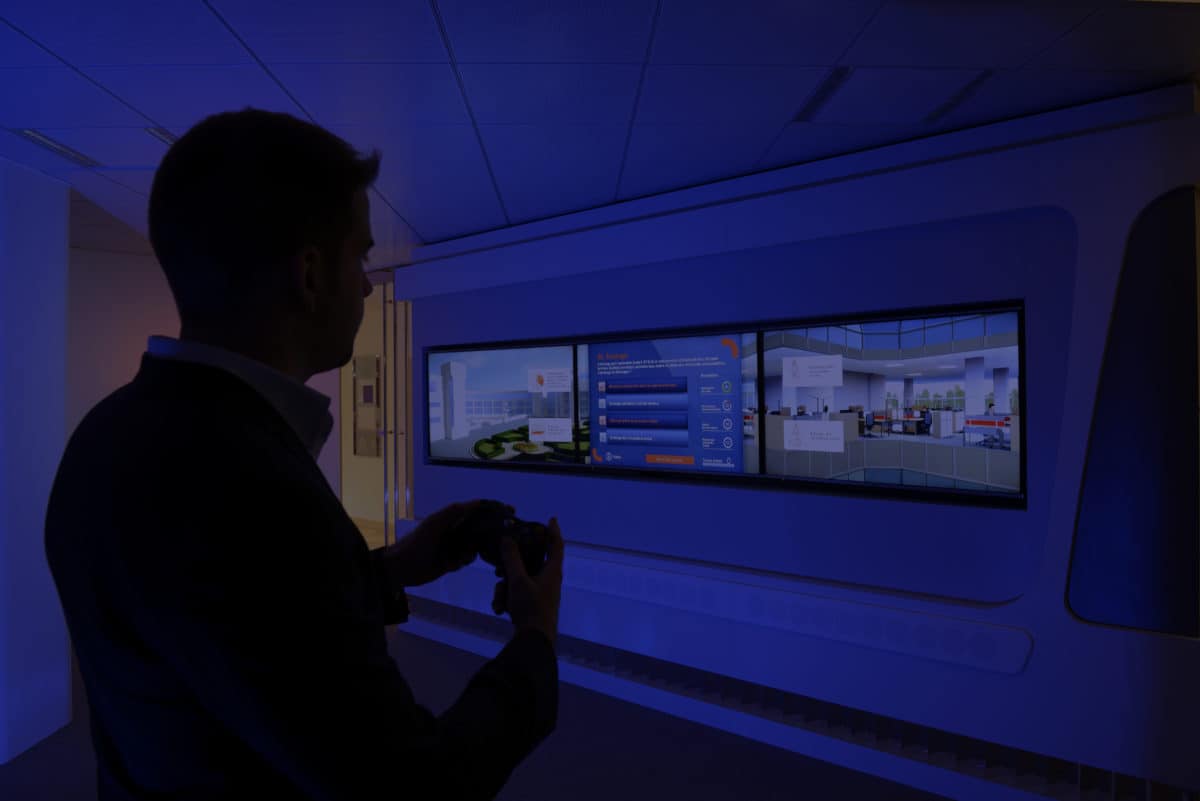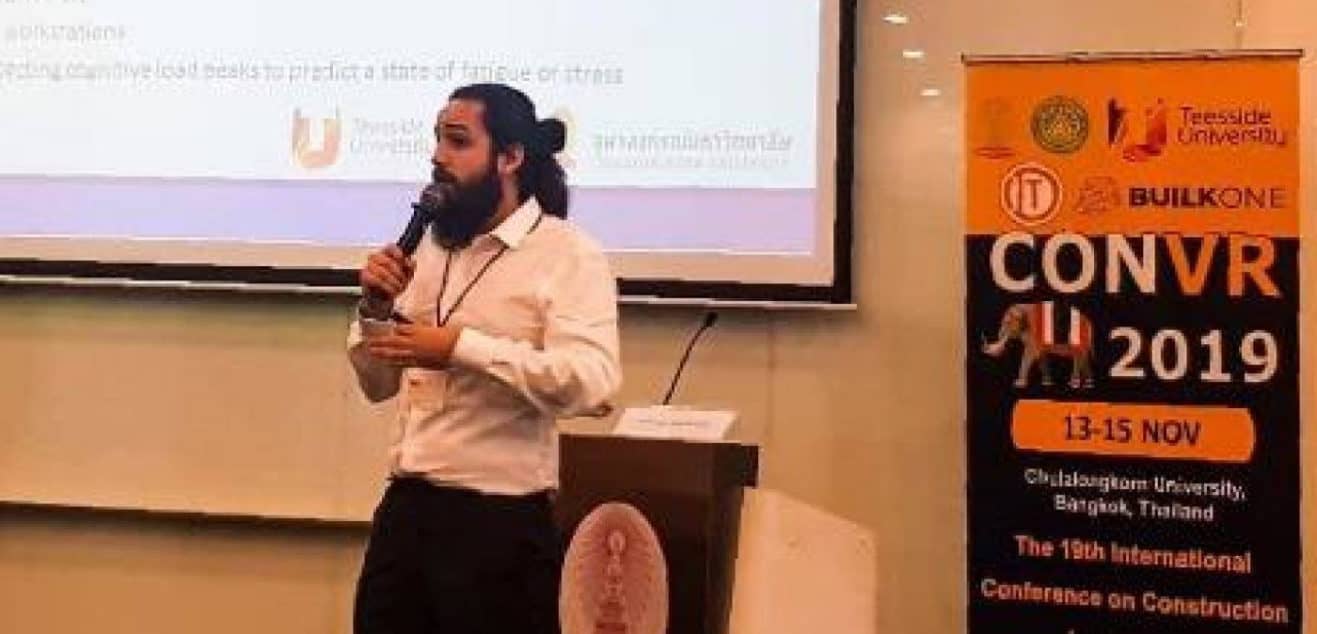
Three questions to… Mehdi Hafsia
3 minutes of reading
Mehdi Hafsia, research engineer for the R&D division, attended the 19th International Conference for Construction Applications of Virtual Reality (CONVR19), an international event dedicated to new technologies in our sector. He would like to share his feedback with us.

At the end of 2019, you attended CONVR2019, an international event on the use of virtual reality in construction. What trends did you see?
Mehdi Hafsia (MH) / Other than virtual reality, the CONVR also addressed other topics: augmented reality, artificial intelligence… And this year, BIM had a key role! A number of the speakers mentioned it, and that was just those who didn’t dedicate their whole speech to it. What did all these speeches have in common? How these new technologies can be used for the benefit of the digitalisation of the worksite. Last year, we spoke a lot about virtual reality and augmented reality being used in training, this year we heard much less about that. These two technologies were used more in the design phases (for design models and detecting clashes), worksite monitoring, project review, monitoring or facility management. The idea: to use virtual reality and augmented reality to support the digital model and really highlight the BIM. Another topic that came up this year was modular concepts, with some case studies presented. However, I noticed that nobody has come up with a “methodological” project on this topic, for example a manual or manifesto to make the modular concept more efficient and quick!What about you, which topic did you talk about?
MH / I presented Bouygues Construction’s vision. We would like to invent the worksite of tomorrow, and more specifically, for my work, the crane operator of tomorrow. The goal of my research? To design an ergonomic workstation for crane operators. I work by putting the operator into a work situation that has been completely recreated using virtual reality. This virtual environment not only comes at a lower cost, but with lower risk. I combine this virtual projection with an electroencephalogram, which captures the brainwaves emitted by the operator, to observe their physiological signs as they work, understand what causes them and find ways to make this workstation as safe as possible. This speech interested a lot of people, especially from Nashwan Dawood (Teeside University, Giuseppe Loporcaro (Canterbury University), Atif Hafeez (Teeside University), or Mikael Johansson and Mattias Roupé (Chalmers University of Technology), just some of the universities in attendance. These people would like to find out more, and so we will stay in touch.
Why does Bouygues Construction and its partners attend this type of conference?
MH / The whole point of these gatherings is to see that we all have the same issues and the same questions as other companies, or other countries. How can we efficiently use the BIM, how can we improve and widen the use of virtual reality or robotics on the worksite, how can we work together on projects from the design phase in order to capitalize on “field” expertise and avoid having to review the models at a later date… The United States, Japan and Thailand are all looking for solutions. Some of them are working on projects very similar to our own. To bring together our different views and discuss the results of our respective research could really help everyone involved. What we need to take home from this is that partnerships are extremely important, in particular with universities, and this, all over the world. In fact, we have an example of this in our R&D division, with the creation, in partnership with Centrale Lille, the Construction Chair 4.0, which is very successful and has already produced some great results. It’s a win-win situation: we provide them with a place to experiment on and our specialist knowledge in construction, and they bring to the table their breakthroughs and the progress they make much more quickly than we do, since they are working 100% on research. It is all about combining knowledge and disciplines to innovate. To conclude, “we are but dwarves on the shoulders of giants!”Most read
More reading
Read also




What lies ahead? 7 megatrends and their influence on construction, real estate and urban development
Article
20 minutes of reading

